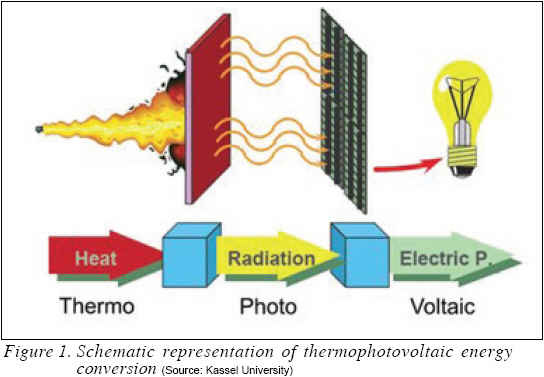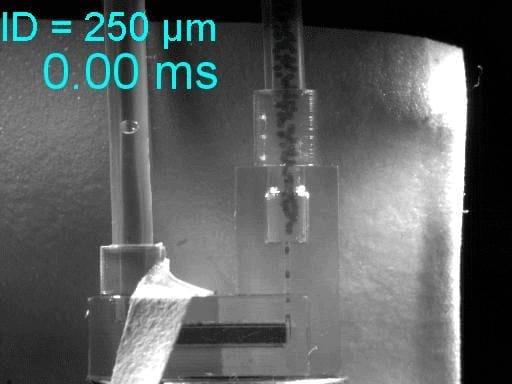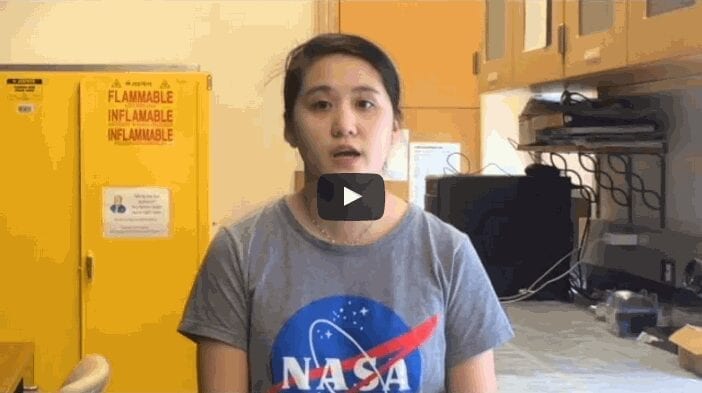
Physicists have discovered radical new properties in a nanomaterial, opening new possibilities for highly efficient thermophotovoltaic cells that could one day harvest heat in the dark and turn it into electricity.
The research team from ANU/ARC Centre of Excellence CUDOS and the University of California Berkeley demonstrated a new artificial material, or metamaterial, that glows in an unusual way when heated.
The findings could drive a revolution in the development of cells which convert radiated heat into electricity, known as thermophotovoltaic cells.
“Thermophotovoltaic cells have the potential to be much more efficient than solar cells,” said Dr Sergey Kruk from the ANU Research School of Physics and Engineering.
“Our metamaterial overcomes several obstacles and could help to unlock the potential of thermophotovoltaic cells.”
Thermophotovoltaic cells have been predicted to be more than twice as efficient as conventional solar cells. They do not need direct sunlight to generate electricity, and instead can harvest heat from their surroundings in the form of infrared radiation.
They can also be combined with a burner to produce on-demand power or can recycle heat radiated by hot engines.
The team’s metamaterial, made of tiny nanoscopic structures of gold and magnesium fluoride, radiates heat in specific directions.
The geometry of the metamaterial can also be tweaked to give off radiation in specific spectral range, in contrast to standard materials that emit their heat in all directions as a broad range of infrared wavelengths. This makes the new material ideal for use as an emitter paired with a thermophotovoltaic cell.
The project started when Dr Kruk predicted the new metamaterial would have these surprising properties. The ANU team then worked with scientists at the University of California Berkeley, who have unique expertise in manufacturing such materials.
“To fabricate this material the Berkeley team were operating at the cutting edge of technological possibilities,” Dr Kruk said.
“The size of an individual building block of the metamaterial is so small that we could fit more than 12,000 of them on the cross-section of a human hair.”
The research is published in Nature Communications.
The key to the metamaterial’s remarkable behaviour is its novel physical property, known as magnetic hyperbolic dispersion.
Dispersion describes the interactions of light with materials and can be visualised as a three-dimensional surface representing how electromagnetic radiation propagates in different directions. For natural materials, such as glass or crystals the dispersion surfaces have simple forms, spherical or ellipsoidal.
The dispersion of the new metamaterial is drastically different and is hyperbolic in form. This arises from the material’s remarkably strong interactions with the magnetic component of light.
The efficiency of thermophotovoltaic cells based on the metamaterial can be further improved if the emitter and the receiver have just a nanoscopic gap between them. In this configuration, radiative heat transfer between them can be more than ten times more efficient than between conventional materials.
Learn more: Nanomaterial to drive new generation of solar cells
The Latest on: Thermophotovoltaic cells
[google_news title=”” keyword=”Thermophotovoltaic cells” num_posts=”10″ blurb_length=”0″ show_thumb=”left”]
via Google News
The Latest on: Thermophotovoltaic cells
- Best T-Mobile cell phone plans in 2024on April 24, 2024 at 6:01 pm
If you want to find a great option at T-Mobile, here are our picks for the best T-Mobile cell phone plans for a variety of different customers.
- Splinter Cell remake - everything we know so faron April 24, 2024 at 7:45 am
It feels like the Splinter Cell remake has been on its way for a decent few years now, which isn't helped by the fact it's been a while since we heard anything official about the game. From what ...
- Best cell phone deals in April 2024on April 22, 2024 at 2:49 pm
Cell phone deals are easy to find these days. Whether you're looking for unlocked phones, prepaid phones, or the best cheap phones worth buying, retailers have made it easier than ever to score ...
- LCTX Lineage Cell Therapeutics, Inc.on April 22, 2024 at 9:00 am
Lineage Cell Therapeutics, Inc., a clinical-stage biotechnology company, develops novel cell therapies for unmet medical needs in the United States and internationally. The company develops ...
- The 7 best cell phones of 2024 go way, way beyond talking and textingon April 18, 2024 at 11:01 am
The latest smartphone can handle so much more than just calls or texts. They're powerful communications, productivity, fitness and entertainment devices -- plus so much more. But that also means ...
- How cell phones are killing our kids, and what we can do about iton April 16, 2024 at 9:59 am
Get inspired by a weekly roundup on living well, made simple. Sign up for CNN’s Life, But Better newsletter for information and tools designed to improve your well-being. His new book, “The ...
- £1.1m awarded to solar energy capture projecton April 16, 2024 at 8:28 am
The EPSRC has awarded £1.1million to a Surrey University led project, which aims to develop solar-thermal devices that can heat our homes and generate power on a larger scale.
- Stem Cells Newson April 10, 2024 at 5:00 pm
When the team transplanted bone marrow stem cells from mice carrying a hereditary version of Alzheimer's disease into normal lab mice, the recipients ... Apr. 22, 2024 — Physical cues in the ...
- Research team creates a chemistry map for human cellson April 4, 2024 at 5:00 pm
Scientists at NPL worked with Diamond Light Source to publish a study that shows how the chemistry of human cells changes, depending on the structure of their extracellular niche, are major ...
- This Bag of Cells Could Grow New Livers Inside of Peopleon April 2, 2024 at 2:00 am
Today, LyGenesis announced that an initial volunteer has received an injection of donor cells to turn one of their lymph nodes into a second liver. The procedure was carried out in Houston on ...
via Bing News










